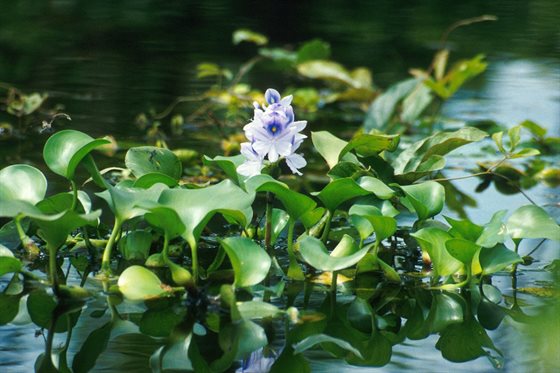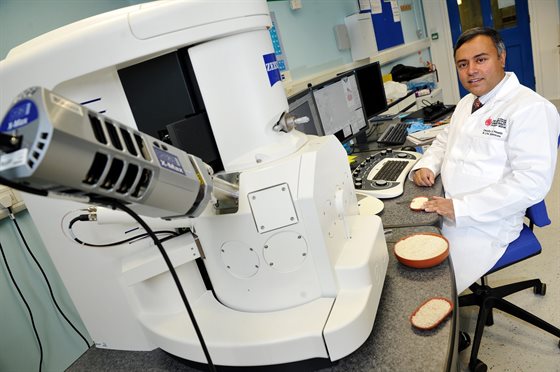The world’s fastest-growing aquatic weed has effectively removed toxins from a polluted river in the UK – a finding which has the potential to revolutionise environmental clean-ups.
A study by De Montfort University Leicester (DMU) researchers published in
Scientific Reports, led by
Professor Parvez Haris, demonstrated the potential of water hyacinth (
Eichhornia crassipes) to remove toxic elements from a highly-polluted stretch of river in south Wales.

The plant’s roots were able to absorb metals and pollutants such as copper, zinc, arsenic, lead and cadmium. In some cases, the plant completely removed all traces of the metal within three weeks.
Although some previous research has reported the use of water hyacinth to remove pollution from water in regions of the world that are its normal habitat such as its native South America, this is the first time it has been shown to do the same in a Northern Hemisphere river.
Prof Haris, Professor of Biomedical Science and Head of the Biomedical & Environmental Health Research Group at DMU, argues that the plant’s fast growth habit, which has led to it being listed as a noxious weed, is likely to be checked by the colder temperatures experienced in the UK.
Currently, contaminated rivers are dredged to remove the polluted mud before capping the river bed, a costly and lengthy process. Other remediation technologies include using chemicals such as microbeads to remove the toxins.
Prof Haris said: “The water hyacinth has a very negative image as an undesirable weed but a weed is no longer a weed when human imagination can be applied to find a good use for it. Instead of fighting this amazing plant, we should find ways to live with it.
“The work we have done is timely and it is essential that the scientific community build upon these findings if we are to fully adapt to climate change and any associated environmental problems that this may bring, which may necessitate the sustainable management and use of such a prolific, yet ecologically admirable plant.”
It is thought the water hyacinth’s long, hairy roots are able to remove the metals from the water through a combination of adsorption (whereby the metal ions stick to the surface of the roots) and absorption, where they are taken up by the plant’s internal systems.

The trial was carried out at Nant-Y-Fendrod, a tributary of the River Tawe near Swansea, which was a focal point of global copper production in the 19th and 20th centuries. Prof Haris said some estimates were that some seven million tonnes of copper and zinc smelting waste was abandoned on the valley floor there.
Despite efforts to remediate the land, it still contains heavy metals, and fails to meet EU water quality standards.
Prof Haris’ PhD student Jonathan Jones, a senior environment officer at Natural Resource Wales (NRW), carried out the proof of concept study by growing the water hyacinth in river water to assess metal removal efficiency; in the laboratory, in the stream itself and along the riverbank.
RELATED NEWS:*
Thinking of studying at DMU? Give us a call!*
Diets high in rice linked to higher levels of arsenic in body*
Postgraduate diabetes work in Leicester praised by City Mayor“The impact of this seminal piece of research has potentially far-reaching consequences in that it offers the possibility of using an invasive weed, which is a widespread global problem, to provide a low-cost, low energy remediation technology, that has the added benefit of being freely available in developing countries and that is harvested in attempts to control its proliferation.
“The plant, although invasive, has been shown to be effective in a lower temperature climate, though will not survive the winter months, which in turn acts as a control which may allow its use in countries where it is not currently permitted to be introduced. This compared to the footprint and cost of chemical and other remediation technologies surely merits its full exploitation.”
Posted on Tuesday 24 July 2018